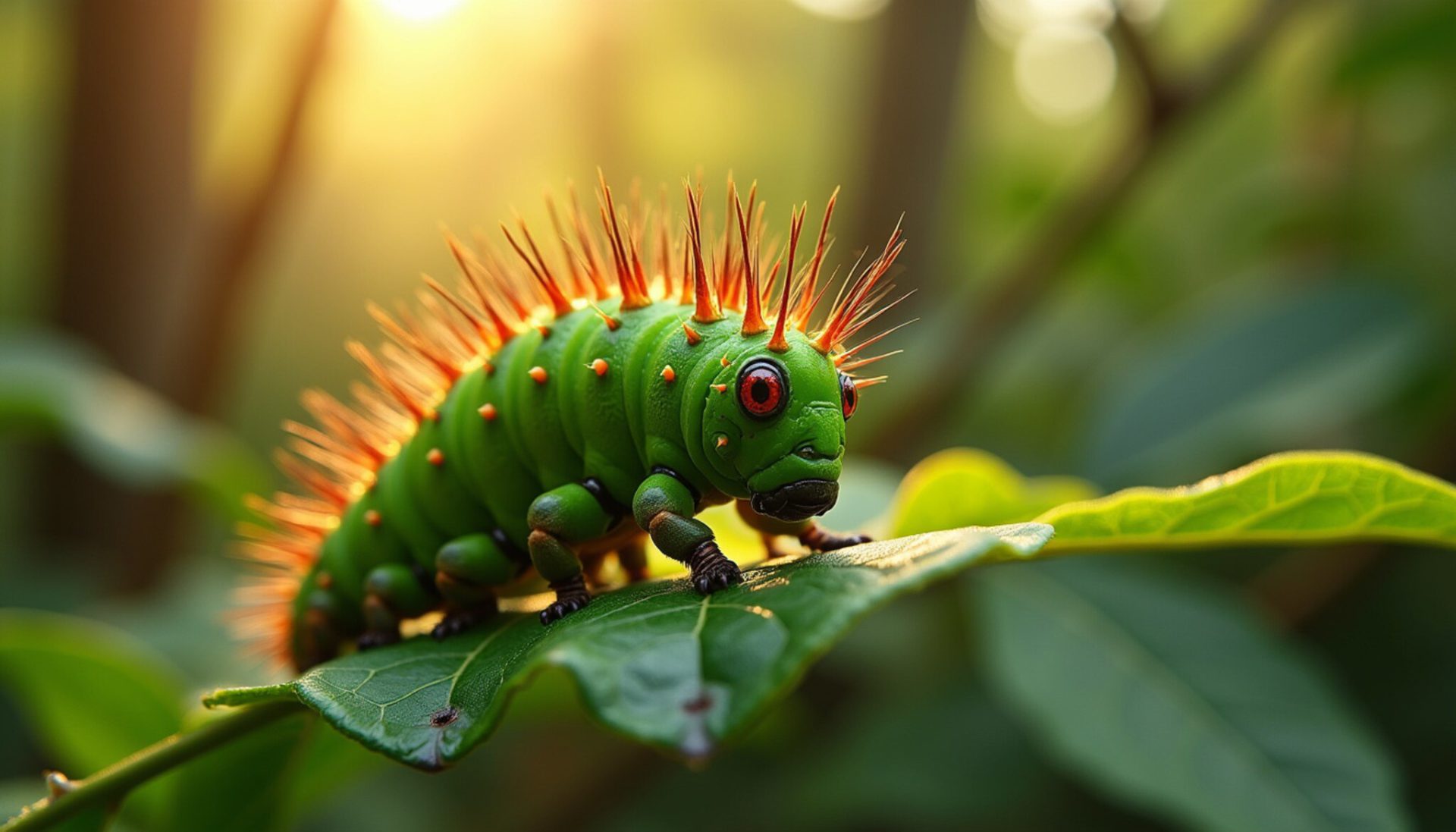The Gardiner’s Territorial Caterpillar
Imagine a caterpillar no longer than a thumbnail puffing itself up to defend its leafy domain against an unknown intruder. It sounds laughable, right? But territorial behavior isn’t just present in lions or wolves. Even the seemingly mundane caterpillar has a primal instinct to guard its territory. When faced with an intruder, territorial animals, regardless of size, are always ready to fight. Let us take a closer look at the world of something as small as turf wars with the Gardiner’s territorial caterpillar as the center of attention.
A Small Caterpillar With a Large Attitude
While it is true caterpillars don’t growl or roar, they sure do have a unique way of declaring, “This belongs to me!” Take the saddleback caterpillar for instance. Ranging all the way from the northern parts of america, this spiky critter means business. If another bug or even a human hand gets too close, this caterpillar will arch its back to reveal venomous protrusions ready to give a painful bite. It is more that just survival. It is about defending its patch of a competetor free patch of leaf. Not many may know, but certain researchers have observed that these caterpillars actually fight rivals off their leaves and roll around the leaves like tiny warriors.
Why does a caterpillar care so much about a few square inches of green? Most likely for food and protection. That leaf is not just a home, it is a buffet and a fortress. In the wild, losing ground equates to death by starvation or becoming a prey to a predator. Sprites have it easier, but it comes at a cost.
Territory Beyond the Leaf
The turf wars are not unique to caterpillar as birds too defend their turf by singing while wolfs mark their territory by scent. It is the little creatures that claim are the ones that surprise us. Epic battles are waged over grains of sand with a army formed by the resident ant colony and they fight back against invaders. A study conducted by the University of California show that some species of ants are able to identify different intruders and will attack them in no time if they use the well planned ambush.
Returning to our little friend, it is indeed not all about violence. Some caterpillars, such as the oak processionary caterpillar are territorial require teamwork more than any other trait. They live in groups and emit fine silk to mark their paths and tell other members to not enter. This is less about confrontation but more about lack of interaction which provides the cleaver shift from the territorial rule.
What Drives This Behavior?
Experts assert that territoriality appears to revolve around survival and reproduction. “Animals defend space because it is tied to their ability to eat, mate, and rear young,” points out Dr. Emily Harper, a biologist and researcher of insect behavior. “For caterpillars, a good territory means access to plants at the correct time.” Timing is also critical, and in spring and summer, during the metamorphosis munch phase, these pests are engaged in their most intense shrimpy territorial skirmishes.
There is more to it than instinct, however. Some evidence suggests that caterpillars have some form of learned behavior. If a rival keeps showing up, maybe they will try to puff up faster or sting more next time. That even the simplest of creatures has to adapt to their challenges serves as a reminder.
A Lesson from the Little Guys
There is something oddly motivational about a caterpillar preparing to confront an encroaching foe. At its core, it’s a leaf-based David and Goliath fight that showcases the reality that size does not dictate bravery. So next time you’re at a park or at your own backyard, don’t hesitate to glance upward, you may just be lucky enough to witness these mini dramas in real time. In addition to being the kind of stuff one expects to see in nature’s films, these acts provides a very clear view of the instinct to defend territory put in action, and how finely honed it can be, even at the smallest scale.
The next time someone crosses an obvious line, like budging ahead of you in the queue at your local coffee shop, try out being a caterpillar. Relax your shoulders (or at least pull your head up) and defend your space. Surely if a caterpillar can muster the strength to do that, so can you.
Conclusion
From spine-laced poisonous warnings to silky threats, the very caterpillar actively shows us that there are primal drives to protect what is personal. These minute sentinels teach us with clarity that guarding space is not limited to a specific area; it encompasses identity, existence, and home. Despite their size, nature’s smallest warriors pack a punch, reminding us that a meek caterpillar has valuable lessons on standing ground to teach us. What is the least you would fight for?
